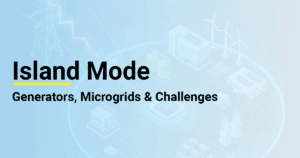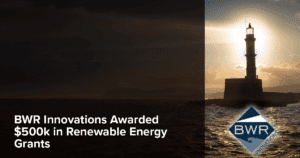Solar Hydrogen Generator: Converting Sunlight into Storable Hydrogen Power
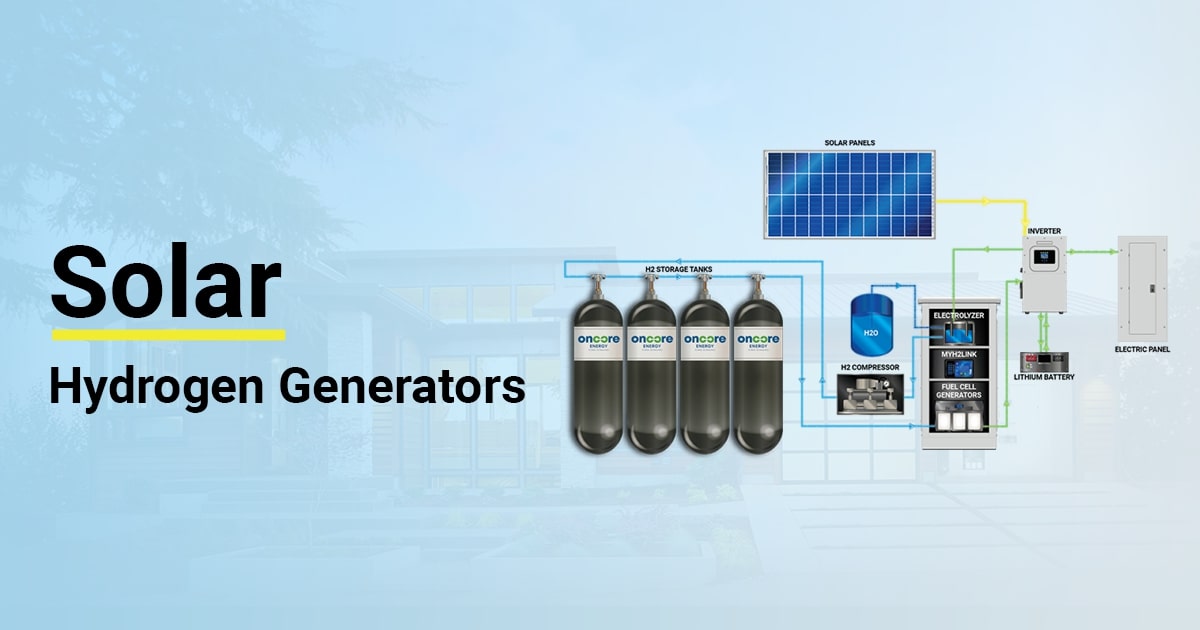
One of the biggest problems to solve with solar energy is the ability to store extra unused power. Solar panels produce more electricity than most systems can use at one time. The way this has usually been solved is through the use of rows and rows of batteries. This can work, but they are very limited in runtime capacity, are expensive, and are highly regulated in disposal. Hydrogen can be used as both a medium of storage and and generator “fuel”.
What is a Solar Hydrogen Generator?
Solar hydrogen generators use solar panels and hydrogen fuel cell power generation to create a complete, independent power system. Extra energy from the solar panel system flows into a device called an electrolyzer, which converts solar electricity into storable hydrogen.

What is an electrolyzer? An electrolyzer is a device that creates hydrogen using the function of electrolysis, which is a process that uses an electric current to drive a non-spontaneous chemical reaction. In the case of water electrolysis, the goal is to decompose water (H2O) into its constituent elements: hydrogen gas (H2) and oxygen gas (O2). This process requires energy input because the formation of water from hydrogen and oxygen is thermodynamically favorable (it releases energy). When coupled with solar panels, the DC electricity generated by the photovoltaic cells is directly used to power the electrolysis process, creating “solar hydrogen.”
How it Works
A solar hydrogen generator is a hybrid of two systems: solar panels and a hydrogen fuel cell generator.
The solar panels generate electricity and send DC power to an inverter. This inverter then converts the power to AC power, which can be used by a homeowner or business owner if they have a generator installed.
The hydrogen fuel cell generator uses bottled hydrogen to create electricity. It’s primarily used as a green alternative to diesel generators. Hydrogen flows from bottles into a fuel cell generator, which converts the hydrogen back into electricity. This then flows to an inverter, and then into a building’s electrical panel. The electricity is then used by the home or business.
The solar hydrogen generator connects these two tools to create a self-sustaining power system. In the industry, we call this a “microgrid”. Solar panels still provide power directly to the inverter, and then to the home. However, if the home is not using the level of electricity being generated during peak conditions, it will send electricity to the electrolyzer. The electrolyzer combines this electricity with water to produce hydrogen. The hydrogen is compressed and stored in tanks. When nightfall happens (or a cloudy day), the hydrogen flows to the fuel cell generators, which generate electricity and send it to the inverter.
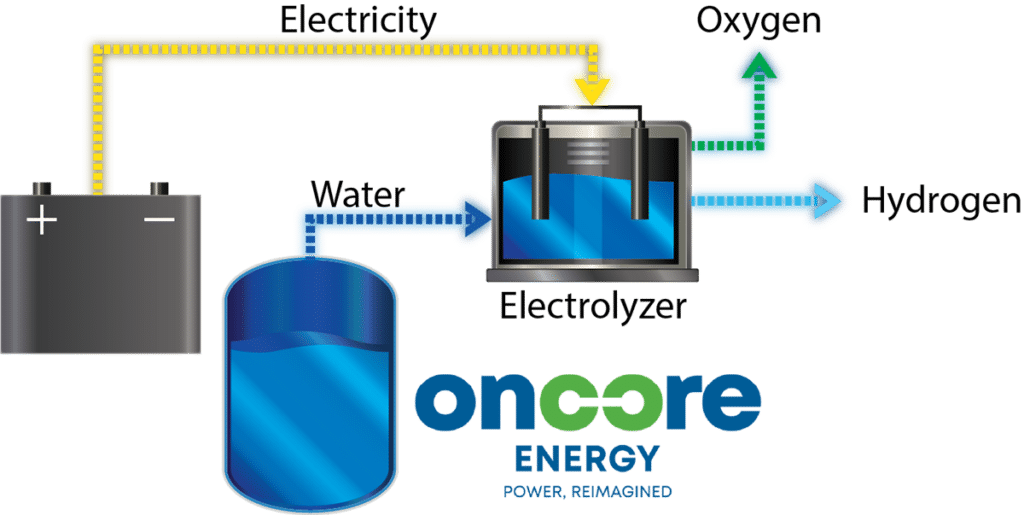
The entire system is built to be self-sustaining, with the only needed inputs being (a) water and (b) occasional repairs to equipment.
Benefits of a Solar Hydrogen Generator
There is a time and place for all types of power generation. Solar-hydrogen generators fill a need where green, renewable energy is required and where power consistency is valued.
Capturing unused energy from native solar
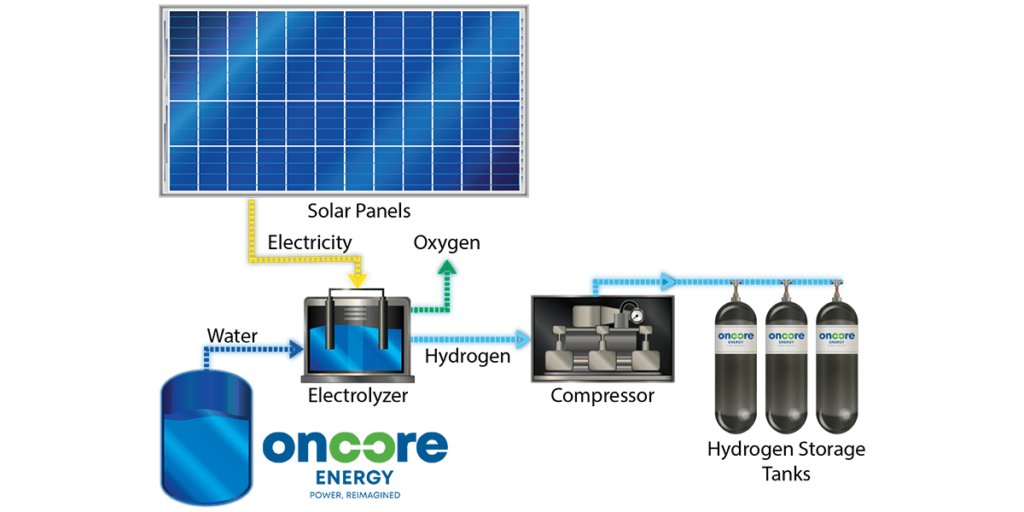
We’ve discussed this previously, but the ability to harvest otherwise wasted power from your solar panels is a huge upside. Traditionally, the way extra energy has been captured and stored is through lithium-ion batteries. While this is pretty straightforward, they have distinct downsides. Batteries only last between three and five years, and must be disposed of via a very regulated process. It takes six batteries to deliver 4 hours of energy to a small/mid-size home. Batteries are also very heavy and expensive relative to the kW capacity.
Hydrogen is stored in pressurized tanks, similar to propane. Hydrogen is stable when stored and does not degrade. The storage tanks used to house the hydrogen can last over 50+ years. A full hydrogen tank can run an average home for 40+ hours without refueling. The only limit on capacity is tank size, so the sky is the limit!
Environmentally friendly
Hydrogen is a naturally occurring element that can be safely manufactured for use in energy production. When hydrogen is used to create electricity, there is no combustion, making it 100% safe and clean. There are multiple ways to create hydrogen, but we use the environmentally friendly gold standard: electrolysis. When we split water into hydrogen and oxygen, the entire process has near-zero greenhouse gas emissions (as the only byproducts are hydrogen and oxygen). This is considered the most sustainable way to produce hydrogen.
Leverage over energy costs
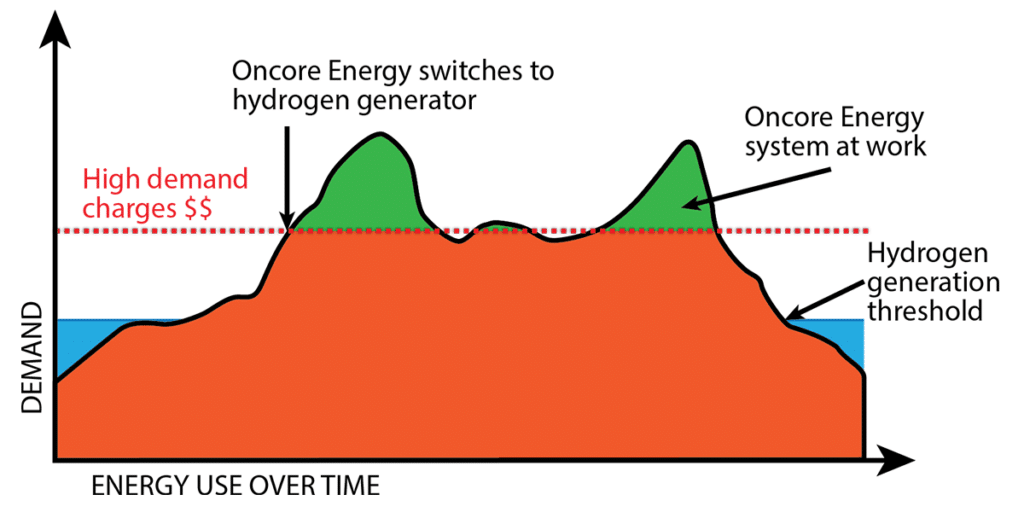
Having the ability to toggle off the energy grid allows you to control the cost basis of energy. If grid energy becomes more expensive than the cost of hydrogen, you can take your home or business “off grid” and run operations on your hydrogen generator.
This is really important in agriculture. Fuel and electricity costs account for 15% of production costs in the United States (according to the University of Maryland). “Demand charges” occur during peak energy times and can result in exorbitant charges for a user.
The process of watching energy prices and selecting the least expensive is called “peak shaving”. Our solar hydrogen generators do this automatically using our MyH2Link technology, which monitors the current cost and makes automated switching decisions. The goal is to always use the lowest-cost energy.
This can also work with other types of power, like wind.
Use Cases
Solar hydrogen generators have very specific applications depending on the situation.
Residential home with pre-installed solar panels
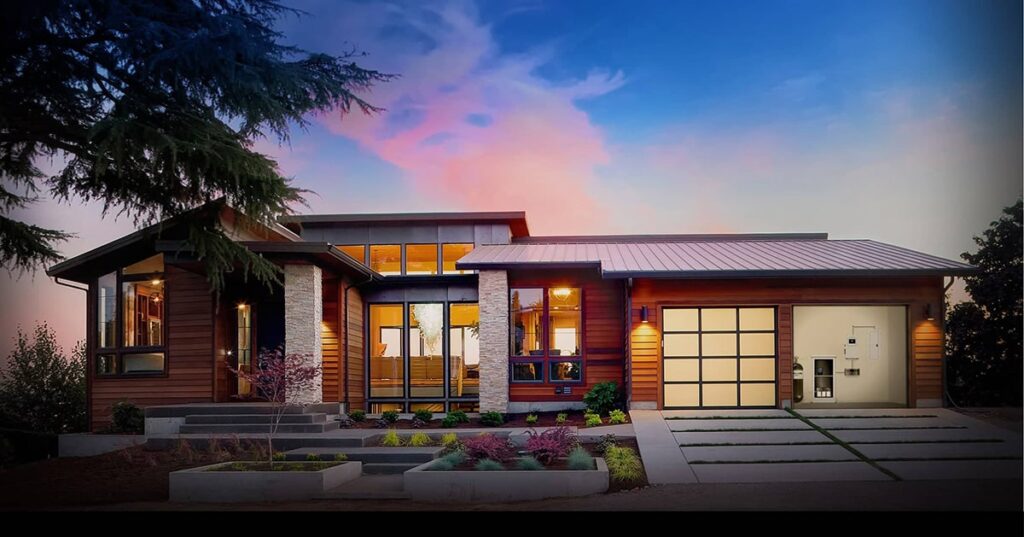
There has been a huge push over the last 10-15 years to get solar panels installed at the individual homeowner level. This has been made possible by a variety of tax incentives and energy buyback programs.
Residential homeowners can get a solar hydrogen generator by installing a hydrogen generator that includes an electrolyzer. A proper setup can allow the homeowner to harvest extra energy during peak solar hours in hydrogen tanks, and then use this hydrogen at night or during cloudy days. At Oncore Energy, we consult with local electricians to integrate existing solar setups with our hydrogen fuel cell generator.
Commercial building preventing blackouts
Certain areas of the country have significantly more blackouts due to grid issues. Owners who have previously invested in rooftop solar systems can integrate a hydrogen generator for seamless power generation. Just like the residential setup, building owners can monitor grid energy costs and switch over to hydrogen power when it crosses the cost line. We call this our Stationary + Hydrogen Generation Option at Oncore Energy.
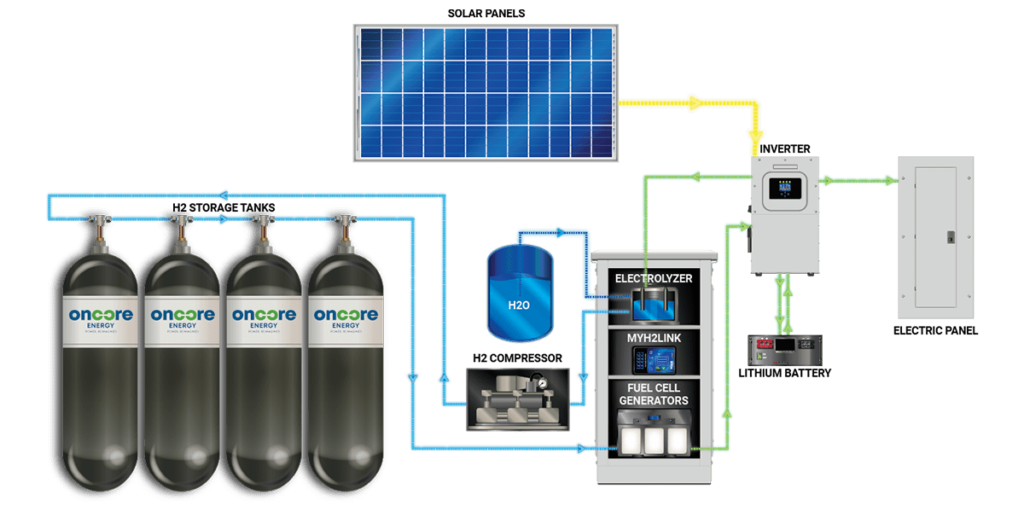
Replacement of diesel generators for ag operations in California
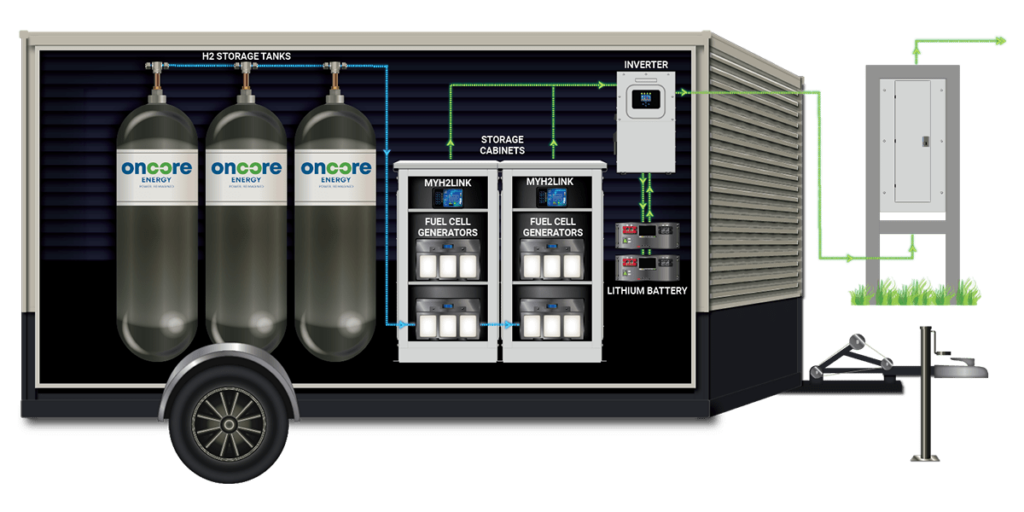
There can be restrictions on what types of power generation may be used in agriculture. California passed a portable generator ban in January 2022, and other states may follow.
Hydrogen fuel cell generators allow you to replace diesel for pumps, drive shafts, or other tools with electrical interfaces. Farms that already have solar infrastructure can turn this into a solar hydrogen generator.
Farms can also use their generator to control costs.
Forward operating base power independence
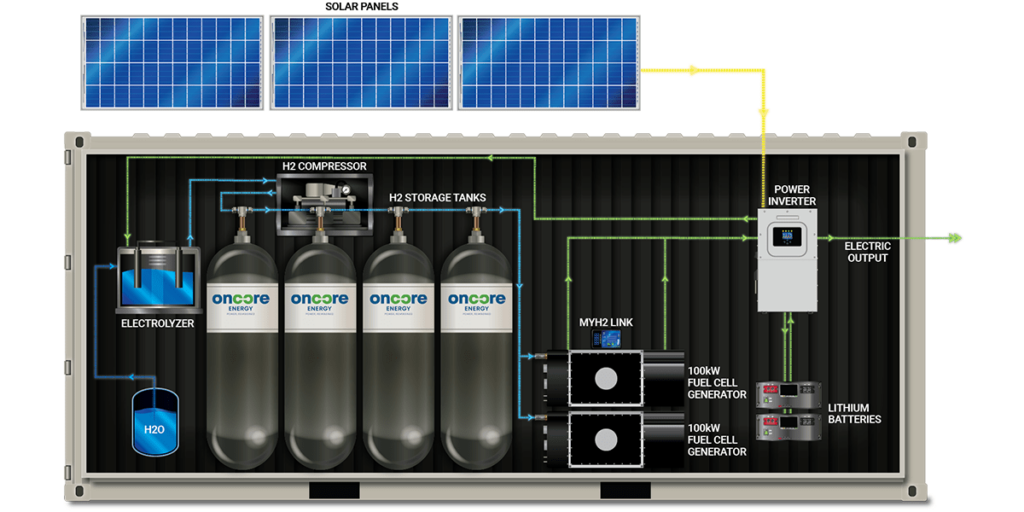
Forward operating bases are secure (but temporary) military installations operating in a tactical area. These bases require large amounts of power to run operations, hospitals, and machine shops. The military can use a blend of solar, wind, methanol, and hydrogen to create a self-sufficient power grid.
The way we deploy our Oncore Energy solar hydrogen generator setup is through the use of a Conex box/shipping container that can be flown in and dropped in any place. This allows units to create and store hydrogen from solar (and also wind and methanol).
Future Potential
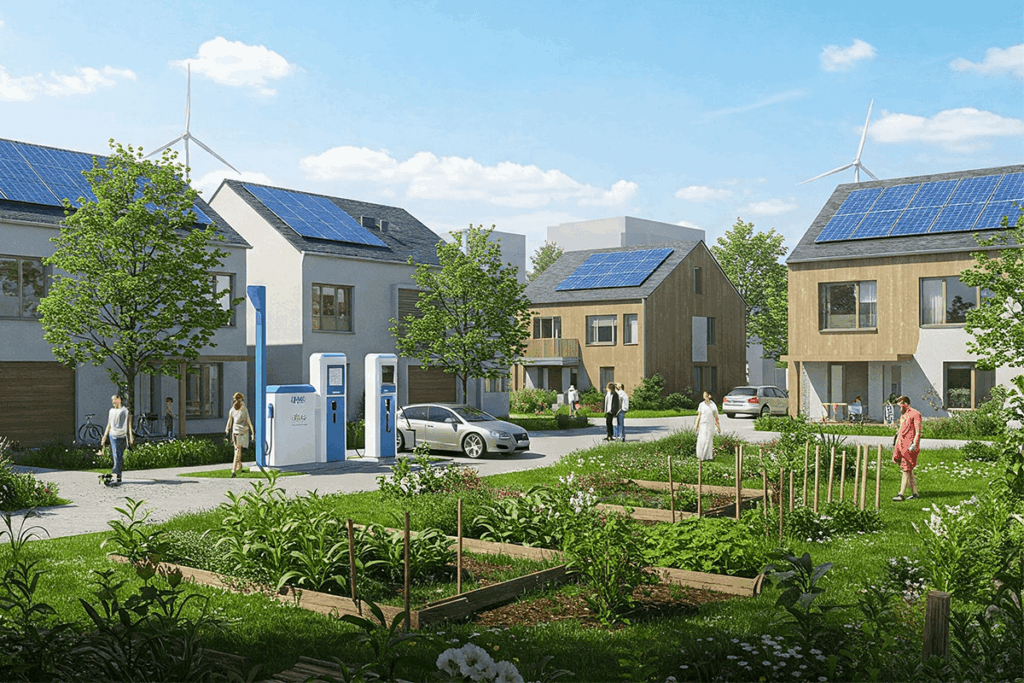
Alternative power generation solutions like solar hydrogen generators could be the future of power generation on both an individual and community-wide scale. Our company is betting on the theory that the economy, regulation, and environmental considerations will cause hydrogen fuel cell-powered microgrids to play a key role in the future. How we think about energy will shift from thinking on a macro level (grid) to a micro level (individual and community-wide). As communities and property owners adopt this way of thinking, hydrogen will become the clear winner due to its advantages over other alternative energy storage mediums like batteries. When they are adopted en masse, it will be up to innovators to come up with solutions to work within the regulations, confines of the existing grid system, and the ability to fit individual use cases.
More from Oncore Energy
Island Mode: Generator Options, Microgrids & Challenges
What is “island mode”? “Island mode” is when a microgrid is disconnected from external forms of power and relies on self-generated power to power all systems within its purview. This is best explained in an example. Let’s imagine a hospital that has diesel generators, but is connected to the main power grid. When the power…
BWR Innovations Awarded $500k in Renewable Energy Grants from North Dakota Industrial Commission
BISMARCK, ND (July 30, 2025) – The North Dakota Industrial Commission announced the approval of $700,000 in matching grants through its Renewable Energy Program. The funding supports two innovative projects, with an award of $500,000 going to BWR Innovations, LLC to advance its hydrogen energy project. The $500,000 grant was awarded to BWR Innovations, LLC…
Oncore Energy Recognized as “Early Adopter” of Honeywell’s Hydrogen Leak Detector
Fargo, N.D. (May 7, 2025) – Automation.com has recognized Oncore Energy and BWR Innovations as one of the early adopters of Honeywell’s Hydrogen Leak Detector (HLD). This acknowledgment highlights BWR Innovations’ proactive approach to integrating safety technology into hydrogen power solutions. The recent release from Automation.com regarding Honeywell’s new HLD sensor has garnered attention across…

